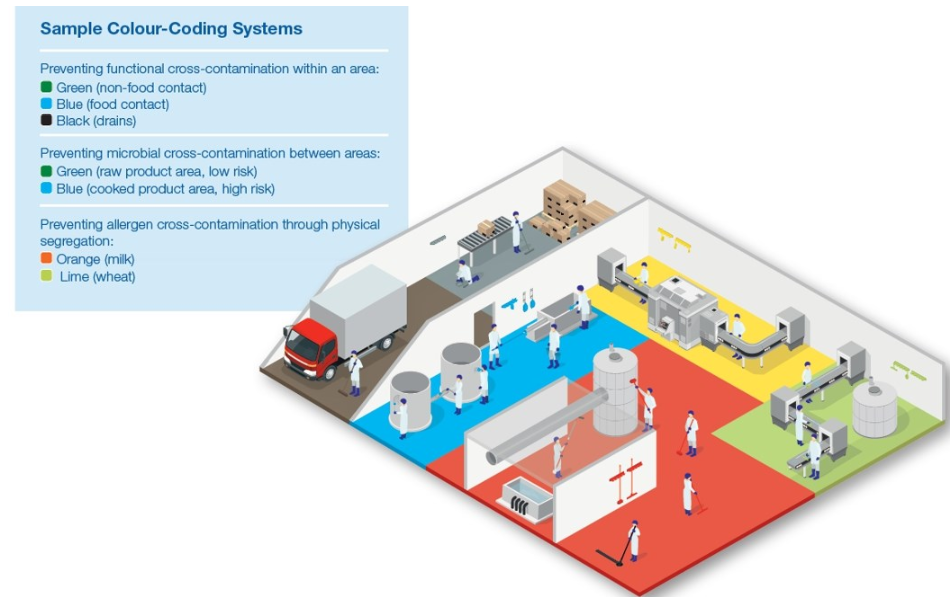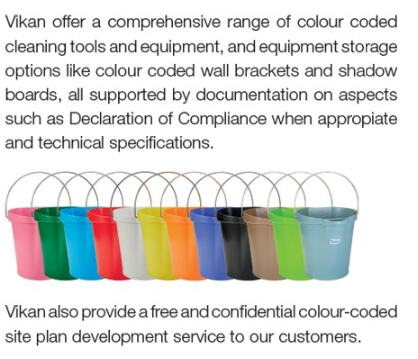How it works
Colour-coded segregation helps minimise the risk of product cross-contamination from microbes and food residues, including allergens, chemicals and foreign bodies. It works by assigning cleaning tools a specific colour for use in specific areas and/or for specific tasks.
For example, red tools can be used in high-risk areas, and yellow ones in low-risk areas. Blue tools could be used to clean surfaces that come in contact with food, while green ones could be used for cleaning floors. This makes it easy to identify whether tools are in the wrong area, or are being used for the wrong task.
SUMMARY
Heightened food safety regulations are driving the need for documented food safety management systems. As a result, more food processors are using colour-coding throughout their facilities to help manage food safety risks.
Colour-coding can be an effective and easily understood way of minimising cross contamination. It has been shown that, with proper implementation, the benefits of a colour-coding system can outweigh the costs. Additionally, while it is not yet a firm requirement by law, colour-coding is often looked upon favourably by customers and inspectors as a practice that shows a companys commitment to food safety.


For more information, please contact us: (021) 758-759-88 or you can email at profiklin@profiklin.com
